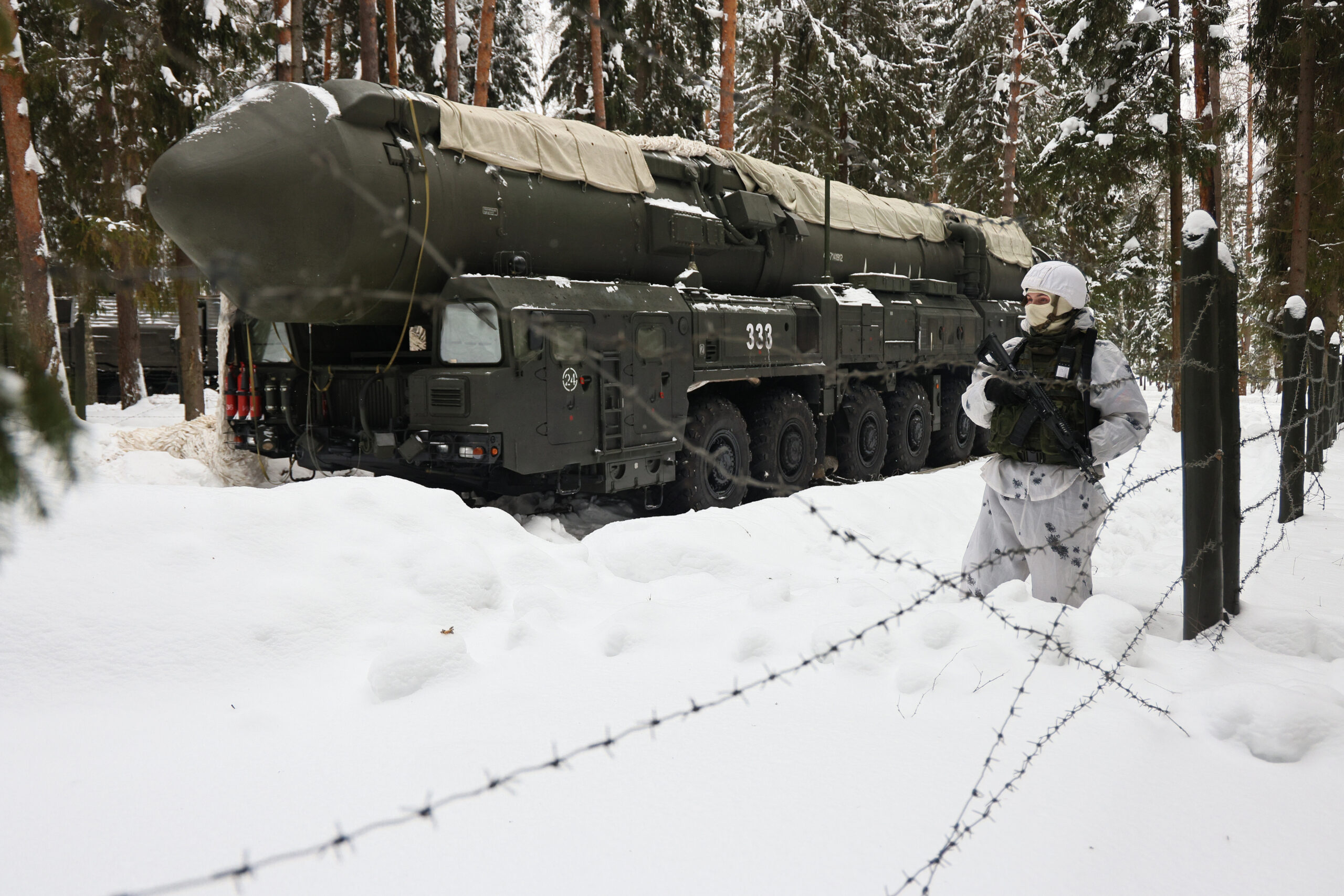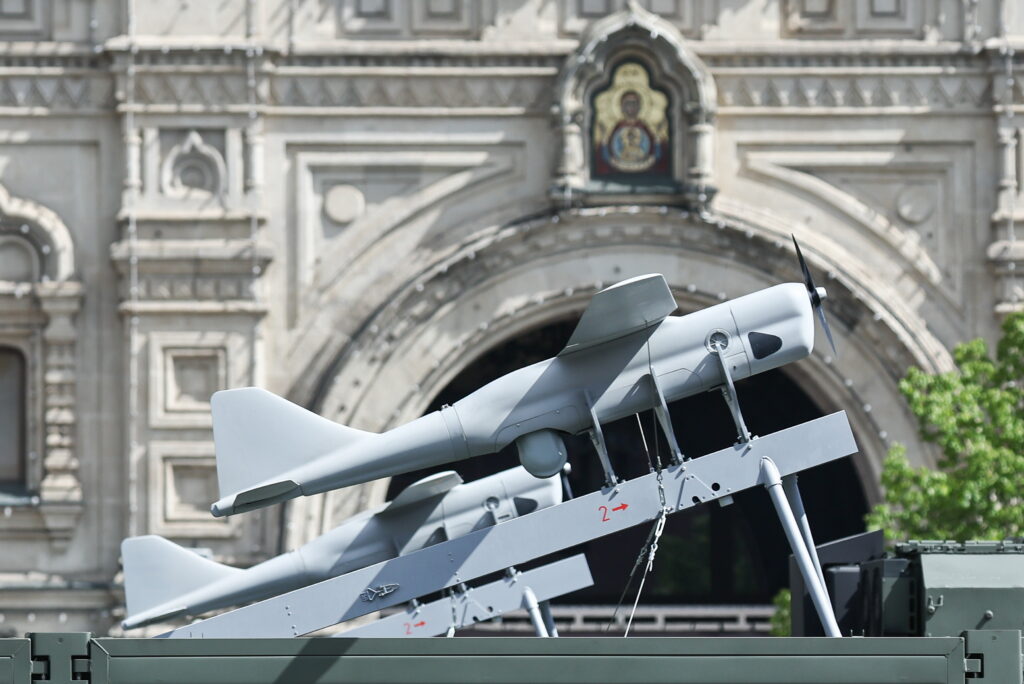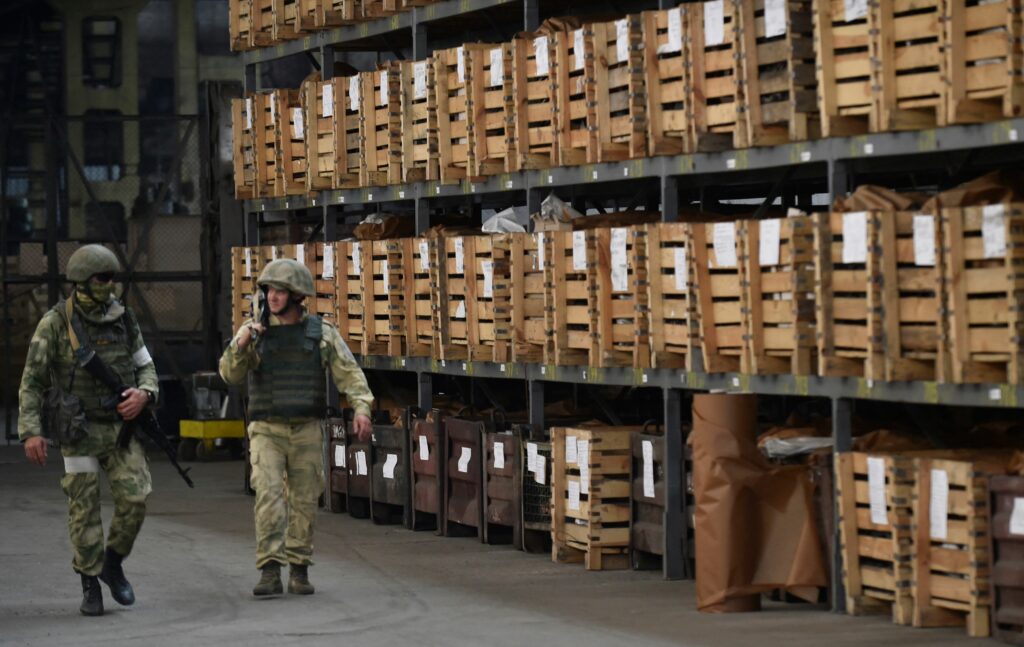It has been nine months since Russia’s suspension of its participation in the New START Treaty, more than one year since the last exchange of data between Russia and the United States on the size of their respective nuclear arsenals, and more than three and a half years since the last inspections conducted under the Treaty. The further one looks, the more questions arise about the actual number of Russia’s strategic weapon carriers.
At the same time, during the most recent data exchange in September 2022, when Moscow was probably already preparing to torpedo the New START, it announced the ownership of 540 deployed carriers, versus 659 for the United States (as of March 2023, when Russia had already stopped exchanging data, the number of deployed carriers for the United States was 662). This was the highest number in more than ten years of this Treaty, as it had never exceeded 528 before.
I have written about the situation with the submarines elsewhere, and now it is also worth considering the current state of the arsenal of intercontinental ballistic missiles (ICBMs) and bombers. Available estimates of ICBMs at the beginning of 2023, provided by SIPRI and IISS, gave a range of 321–339 missiles, and the number of bombers was estimated at around 70-76, of which 15−16 were Tupolev Tu-160s and 55−60 — Tupolev Tu-95MS.
There has been quite a backlash from a number of prominent nuclear weapons experts following my previous article on strategic submarines. Therefore, it should be emphasized that the main purpose of these articles is to understand and assess exactly the real state of the Russian strategic forces and the prospects for their development, regardless of what Russia declares publicly. In other words, this text in no way calls into question the approach established among leading research centers and experts to quantify Russia’s nuclear arsenal in the absence of any outside inspection. It is merely an attempt to look at the issue from the same angle as the Russian leadership, which has full information on how many formally deployed nuclear weapons carriers are capable of performing their missions in practice.
Intercontinental ballistic missiles
In September 2023, Russia announced that it had put the new «Sarmat» intercontinental ballistic missile on alert, although the missile itself had not been tested. It is located in one of the silos or launch facility of the Uzhursk rocket complex (62nd rocket division) in the Krasnoyarsk region, close to the production plant where it was manufactured. Given that the «Sarmat» is intended to replace the R-36M2 «Voyevoda» ICBM, and is in fact its localized and modernized version, the rush for the new missile may have a simple explanation. Although the «Voyevoda» missiles are officially still in service, in practice they are well beyond their service life, which had already been extended several times in the 2000s and 2010s.
The life extension of certain ICBMs is carried out by a credited launch of one of the oldest missiles. The last «Voyevoda» life-extension launch took place in 2013, and the next life-extension procedure was carried out in 2019−2020, but this time without any launches. At the time, it was also planned that in any case the «Voyevoda» ICBM would be decommissioned in 2024. The 34 missiles of this type still officially in service, according to SIPRI (46 missiles according to IISS), can already be considered unusable with minimal risk of error: after all, a decade without launches speaks for itself. Even the last launch of the Dnepr launcher, which is a modified version of the «Voyevoda» ICBM, took place in 2015: this project ceased to exist due to the breakdown of industrial cooperation with Ukraine.
The early deployment of «Sarmat» may have not only a political meaning, expressed in maintaining the illusion of parity with the United States and the constant updating of the nuclear threat against the Americans and their allies, but also an organizational or logistical dimension. The fact is that the «Voyevoda» ICBM is deployed in two missile divisions, the 13th in the Orenburg region and the 62nd in the Krasnoyarsk region. While the 13th Rocket Division has in recent years been working with UR-100N (UTTH) ICBMs equipped with Avangard HGV planning blocks instead of traditional warheads, the 62nd Division needs to maintain its personnel’s skills in working with liquid-fuelled missiles. The «Sarmat» ICBM, even in its crude form, could probably be used for this purpose. At the same time, the «Sarmat» ICBM program and the retention of the 62nd Strategic Rocket Forces Division have nothing to do with the concepts of nuclear deterrence and mutual assured destruction. The main point of «Sarmat» is to maintain the Makeyev State Rocket Centre in Miass and the Krasnoyarsk Machine Building Plant in Krasnoyarsk, as well as to keep the Proton PM plant in Perm busy. The fact is that without a new liquid-fuelled intercontinental rocket, the first two enterprises simply cannot operate, and the Perm plant will lose its workshop for the production of rocket engines with high-boiling fuel components.
Something similar to the «Voevoda» situation is happening with the «Topol» and «Topol-M» solid-fuel ICBMs. It is noteworthy, that the last known launches of «Topol» and «Topol-M» ICBMs took place in autumn 2019, that is to say, four years ago. The final decommissioning of the «Topol» ICBMs was planned for 2024, yet it will happen a little earlier, before the end of 2023. According to the latest expert estimates, by early 2023 there were nine units of the mobile version left. That said, these missiles were already beyond their guaranteed service life, even taking into account their repeated extensions. Just to compare: in the early 2000s their number was estimated at 45 units.
As for the «Topol-M» ICBMs, the gradual decommissioning of the remaining 78 missiles was previously planned for the period leading to 2030, taking into account the previously extended warranty period of 20 years. It is likely that this period will be extended to 22−25 years (i.e. till 2032−2035), but this will require launches. It follows that at least one launch of «Topol-M» ICBMs should take place in the foreseeable future in order to extend the service life of these missiles. The very fact of such a launch will be an indicator of their current technical condition.
Yet the basis or the core of the Russian strategic missile forces is constituted by mobile and silo-based «Yars» ICBMs (by early 2023 Russia had anywhere between 180 and 193 units of them). Based on the available data for 2015−2022, the current average annual production rate of these missiles can be estimated at 16 units (in individual years the delivery of these missiles could be higher or lower than this average), which means that by the beginning of 2024 the number of «Yars» ICBMs will be about 200 units or even more. Taking into account that the guaranteed service life of these missiles exceeds 20 years, the number of «Yars» ICBMs in Russia will increase steadily, even if it has to reduce the rate of their production for technical and economic reasons.
Thus, by early 2024, the top number of deployed Russian ICBMs will be as follows:
• «Yars» ICBMs: 196−209 units
• «Topol-M» ICBMs: up to 78 units
• UR-100N UTTH ICBMs with the Avangard complex: up to 10 units.
Simply put, the Strategic Missile Forces will have up to 297 ICBMs.
Consequently, if the «Topol-M» ICBM retirement rate is equal to or lower than the «Yars» ICBM production rate (assuming the current production rate is maintained), then 2023 will be the low point, and from 2024 the Strategic Missile Forces will begin to increase the number of available ICBMs after years of downsizing. If the «Topol-M» missiles are withdrawn more quickly, the Strategic Missile Forces arsenal will hit its nadir somewhat later.
In general, however, this dynamic depends more on whether Russia can continue to produce an average of 16 «Yars» ICBMs per year, whether it will reduce its output or, on the contrary, increase it. Here we should take into account Moscow’s current efforts to expand the production capacity of Votkinsk Machine Building Plant, which produces «Yars» ICBMs, «Bulava» SLBMs and ballistic missiles for the «Iskander» systems. As for the «Sarmat» ICBM, when and if it passes all tests, its production rate is unlikely to exceed six units per year until the early 2030s.
Nevertheless, the lack of quantitative parity with the United States, where 400 LGM-30 Minuteman III ICBMs have been deployed and where mass production of new LGM-35A Sentinel ICBMs to replace retiring Minuteman IIIs is scheduled to begin by 2030, does not pose any additional threat to Russia. Moreover, Russia could easily provide an effective nuclear deterrent with fewer missiles at its disposal. In other words, the Russian leadership’s current efforts to overcome the threshold of having 300 ICBMs are driven purely by foreign and domestic political objectives, not by the objectively determined need to strengthen the nuclear deterrent system.
Heavy bombers
It is extremely difficult to assess the current state of the Russian fleet of Tupolev Tu-95MS and Tu-160 heavy (strategic) bombers. We simply do not know the frequency with which each of the aircraft flies, or whether they fly at all. The length of their remaining technical life is also unknown, as is, crucially, the remaining life of the engines.
The designated life of the NK-12MP engines that power the Tu-95MS, for example, is 5,000 hours. In 2020, ODK-Kuznetsov, a subsidiary of United Engine Corporation, itself a daughter company of Rostec, promised to increase this resource fourfold should an order be placed. However, it appears that this commitment has fallen through and negotiations with the Ministry of Defense have failed to progress any further. The service life of NK-32 engines, which the Tu-160 use, is 2,600 hours. It is this difference in engine service life together with the more labour-intensive preparation that Tu-160 require for each flight that can explain, for example, why Russia relies on the Tu-95MS in the war against Ukraine and does not use the Tu-160: it is thus trying to save the Tu-160’s resources.
Nevertheless, for evaluation we can draw on some available data on the repair programs of bombers. For example, between 2008 and 2017, thirteen Tu-160s underwent repair or inspection and maintenance. A few years later, two of these thirteen aircraft, which were returned to service in 2009−2010, were repaired again and returned to the military in 2019.
In 2015, work began on restoring the production of Tu-160s, and a program was launched to modernize existing Tu-160s. As a result, a contract was signed in January 2018 for the construction of ten new Tu-160Ms by 2027. Around the same time, the first flight of a pre-production (prototype) Tu-160M based on an unfinished aircraft built in the early 1990s and named «Pyotr Deinekin» took place. In 2019, the authorities announced their plans to upgrade ten existing Tu-160s to the Tu-160M version.
All these efforts were geared towards an explicit aim of prolonging the service life of the Tu-160 until Russia is able to develop and start serial production of a new generation of heavy bombers. Moreover, despite optimistic statements from the top of the Russian aerospace industry, there is still little clarity about when and how a new generation of bombers will be designed and produced.
As a result, by the end of 2023 the Russian military will receive two new Tu-160Ms and two older but modernized Tu-160Ms. The new aircraft include a pre-production Tu-160M «Peter Deinekin», which has apparently remained at the plant all these years in order to refine the NK-32 engines, the production of which in small batches has been restored in Samara in the NK-32−02 version. Also among the new aircraft is the still unnamed Tu-160M, which made its maiden flight in January 2022 and continued factory tests all last year.
One of the Tu-160Ms that has undergone modernization is «Igor Sikorsky», which, by the way, did not undergo repairs in the late 2000s-2010s. It is worth noting that its modernization took a long time: the first flight after the first phase of modernization took place in February 2020, with further work to refine and optimize the aircraft. The first flight with NK-32−02 engines took place in November 2020. Further tests were carried out until 2021–2023. The second modernised Tu-160M, probably «Boris Veremey», which also did not undergo any factory repairs in the last ten years, took to the skies in September 2021. Meanwhile, according to the data from the summer of 2023, two more new Tu-160Ms were in production at the time, one of which made its maiden flight in December 2022.
It seems to follow that by 2023 the fleet of Tu-160 and Tu-160M bombers will have increased to 17 operational aircraft: 13 Tu-160s repaired in 2008−2017, two of which will be repaired again in 2019, two new Tu-160Ms and two modernized Tu-160Ms. By 2024−2025 it will have grown by at least two more new Tu-160Ms. The problem is that it has been 10 to 15 years since the last factory overhaul of these eight Tu-160s, and some of them are probably already in need of repairs.
In 2021−2022 the old NK-32 engines — at least two units per year — underwent overhauls. That is the figure for just one Tu-160. At the same time, the production of NK-32−02 engines, which began in 2017, still had not exceeded four units per year by the end of 2022. Put simply, if the contract for ten new Tu-160Ms can still be fulfilled by 2027, the modernization of at least ten of the remaining Tu-160s to the Tu-160M version is in doubt. And while the number of Russian Tu-160/Tu-160M heavy bombers will increase between 2023 and 2024, it will fall again thereafter — and probably even below the 15−16 aircraft threshold. In addition to engines, avionics and other systems and mechanisms will inevitably need to be upgraded. At the same time, it should be recognized that up to a third of the growing fleet of these bombers might not even be operational.
The situation of the Tu-95MS fleet is even more difficult to ascertain and analyze due to its size. Nevertheless, some information is available here, too. For example, a program to replace the on-board electronics of the Tu-95MS started in 2015, and for some reason the service life of the new equipment was set at only ten years. It was assumed then that by 2020 such modernization would affect all aircraft of this type. However, in the last ten years there is only information about 26 repaired Tu-95MS bombers, although there were previously plans to modernize 20 aircraft in 2015−2016 alone. If we take into account that Tu-95MS are permanently stationed in the Saratov (Engels) and Amur (Ukrainka) regions, and that regular missile strikes against Ukraine from 24 February 2022 to the present usually involve up to 15 Tu-95MS bombers from Engels or from alternative airfields, then there is a correlation between the figures.
At the same time, in the early 2020s, Russia developed a modernized version of the Tu-95MS: the Tu-95MSM. The first flight of this aircraft, based on one of the flying Tu-95MS, took place in the summer of 2020. It was still in testing in early 2023, although in the summer of 2021 the Ministry of Defence signed a contract to upgrade an undisclosed number of Tu-95MS to the Tu-95MSM version.
As for the engines for these bombers, the NK-12MP has long been out of production, and the overhaul rate for 2021−2022 is eight engines per year, which means that Russia can only overhaul the engines for two Tu-95MS/Tu-95MSM aircraft per year. Taking into account the increased consumption of engines endurance or lifetime and other systems of these bombers since 2022, it can be argued that the remaining fleet of Tu-95MS, in addition to the 26 modernized aircraft, is a donor of spare parts for flying bombers.
And if in the case of the Tu-160 we can see an increase, albeit temporary, in the number of flying aircraft, in the case of the Tu-95MS we can probably only talk about maintaining the existing number of operational aircraft.
The total number of operational heavy bombers in Russia by the end of 2023 will be no more than 43 units: 26 repaired and modernized Tu-95MS and 17 Tu-160s. And this is without taking into account the fact that some of them will probably have been damaged at airfields or lost in military operations.
Therefore, by the beginning of 2024 the total number of usable strategic nuclear weapons carriers in Russia will not exceed 470−480 units. It is likely that in reality the figure will be lower still. Nevertheless, these delivery vehicles will be distributed in the following proportions:
• 144 SLBMs (taking into account the planned commissioning of the «Emperor Alexander III» submarine at the end of 2023)
• 297 ICBMs
• 43 heavy bombers.
By comparison, Russia had 473 deployed aircraft carriers in September 2013 and 485 in March 2020. But even this number should be considered excessive. Russia can provide effective strategic deterrence with fewer nuclear weapons carriers, as do the United Kingdom, France and China (even given its efforts to build up its nuclear arsenal), as well as Israel, India and Pakistan. And if we do not yet consider the prospect of Russia’s complete renunciation of nuclear weapons, there is a balance between nuclear deterrence, the interests of the welfare of society, its real economic, intellectual and technological capabilities, and the urgent need to restore its international reputation. This balance implies that Russia’s strategic nuclear forces can be considered more than sufficient with 100 to 200 delivery vehicles, i.e. comparable to what France, Great Britain, India or Israel have at their disposal today.










